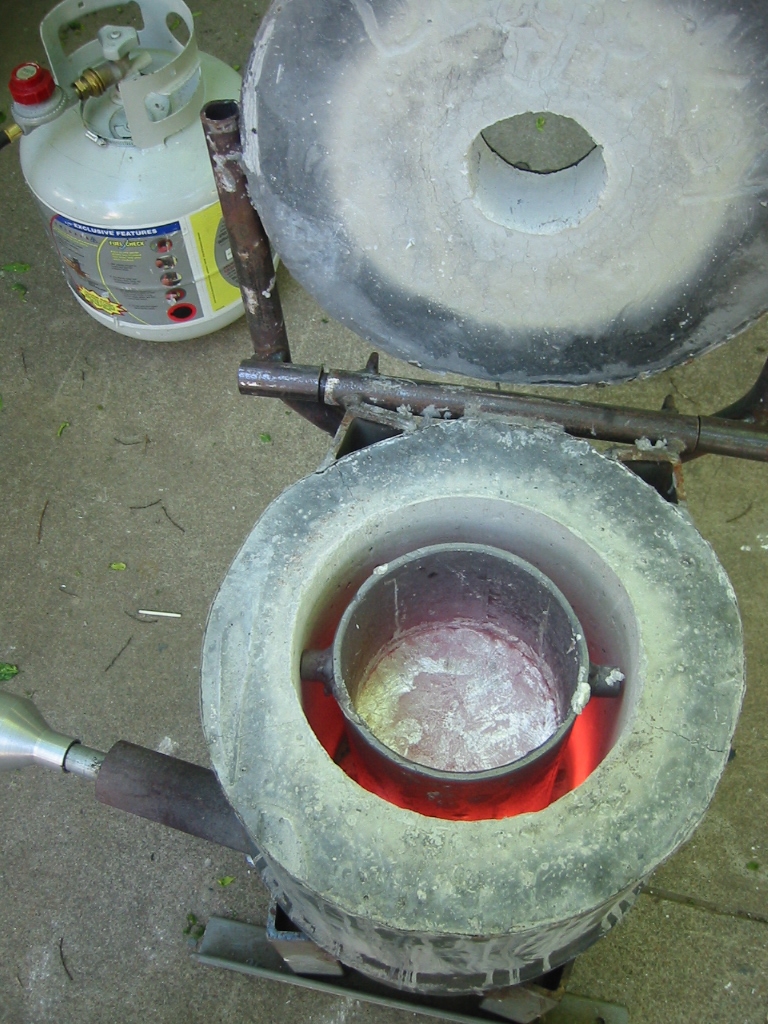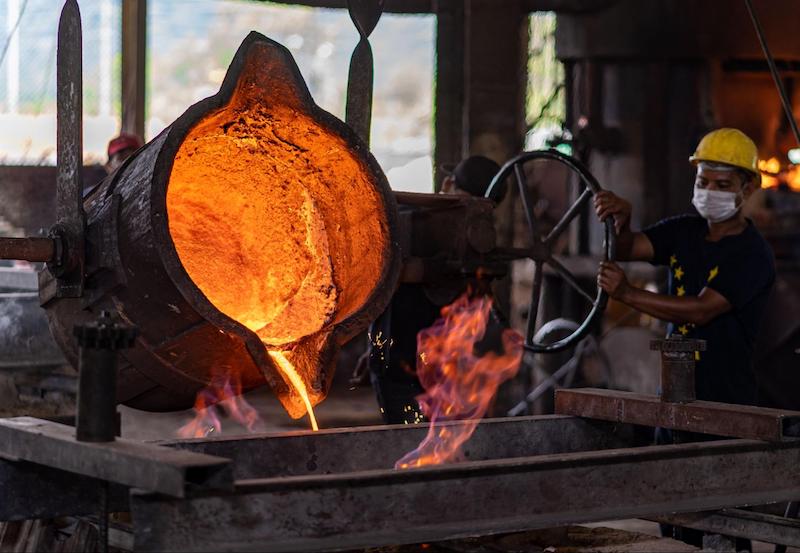How Aluminum Castings Enable Sustainable and Eco-Friendly Production Practices
Wiki Article
Discovering the Cutting-edge Strategies Used in Modern Aluminum Foundries
Modern aluminum foundries are going through a substantial improvement through the adoption of cutting-edge strategies. Advanced casting techniques, wise automation, and sustainable techniques are reshaping production processes. These advancements not just enhance effectiveness but additionally address ecological issues. As the industry advances, the combination of digital modern technologies plays a crucial function. Understanding these adjustments is crucial for understanding the future of aluminum manufacturing and its effects for worldwide markets. What exists ahead in this vibrant market?Advanced Casting Techniques

Additionally, improvements in thermal control and mold and mildew style have contributed to more consistent casting outcomes. These innovations permit for far better control of cooling down rates, minimizing flaws and enhancing mechanical properties. Therefore, suppliers can develop lightweight yet resilient components, meeting the raising needs of different markets, including automotive and aerospace, for high-performance aluminum components.
Smart Automation and Robotics
The assimilation of clever automation and robotics in aluminum foundries notes a considerable improvement in producing effectiveness. These technologies enable precision and consistency in production processes, drastically reducing human error and boosting security. Automated robotic systems take care of recurring tasks, such as molding, putting, and cooling, permitting human operators to concentrate on more facility obligations that call for important thinking and oversight.Furthermore, ai-driven analytics and clever sensors give real-time data surveillance, helping with anticipating maintenance and decreasing downtime. This results in maximized resource allowance and improved energy intake, contributing to total sustainability in production.
The flexibility of robotic systems permits for quick modifications to changing production demands, boosting versatility in production. As foundries increasingly take on these advanced innovations, they not just enhance functional performance yet also position themselves as leaders in development within the steel casting market.
Additive Production in Foundries
Changing typical manufacturing approaches, additive production is revolutionizing aluminum foundries by enabling the creation of complicated geometries that were formerly unattainable. This strategy permits the layer-by-layer building and construction of parts, significantly decreasing material waste and shortening production times. Because of this, foundries can produce elaborate designs that enhance performance and functionality, catering to the growing needs of various sectors.Additionally, additive production helps with rapid prototyping, allowing designers to examine and repeat layouts swiftly. This dexterity not only accelerates the growth cycle however likewise aids in recognizing prospective issues prior to full-scale manufacturing begins. The assimilation of sophisticated materials and procedures in additive manufacturing better improves the mechanical buildings of aluminum components, promoting technology in product layout. Aluminum foundries that adopt these strategies place themselves at the center of industry innovations, making sure competitiveness in an ever-evolving market landscape.
Sustainable Practices and Recycling
Lasting techniques in aluminum foundries are increasingly concentrated on enhancing recycling procedures and embracing green casting methods. These innovations intend to reduce waste and energy intake while making best use of using recycled materials. As the sector develops, the combination of sustainability right into production techniques ends up being essential for satisfying ecological criteria and consumer demands.Reusing Process Improvements
As sectors increasingly acknowledge the environmental effect of waste, aluminum foundries are taking on cutting-edge recycling process enhancements to boost sustainability. These advancements concentrate on reducing energy intake and optimizing product recovery. For instance, lots of foundries are applying closed-loop systems that reuse scrap aluminum generated during production, decreasing waste and lowering the requirement for virgin products. Advanced arranging modern technologies, such as automatic optical sorting, enhance the separation of different aluminum qualities, boosting the effectiveness of the recycling procedure. In addition, some foundries are using hydrometallurgical techniques to recover aluminum from intricate waste streams. By incorporating these renovations, aluminum foundries not only add to a circular economy yet additionally decrease their carbon footprint, straightening with international sustainability objectives.Eco-Friendly Casting Techniques
While standard casting techniques frequently involve substantial energy usage and product waste, aluminum foundries are increasingly embracing environment-friendly casting strategies that prioritize sustainability. Methods such as low-pressure die casting, which minimizes air exhausts, and making use of water-based mold and mildew releases add to reduced ecological influence. Furthermore, innovations in 3D printing innovation permit for the creation of intricate molds with less product waste. Several foundries are also applying closed-loop systems that recycle water and aluminum scrap, more decreasing resource intake. By welcoming renewable energy resources, such as solar and wind power, these centers enhance their sustainability efforts. On the whole, the adoption of green practices in aluminum casting not only benefits the setting but likewise advertises economic effectiveness and advancement within the industry.Enhanced Top Quality Control Steps
Boosted quality control actions in aluminum foundries are significantly dependent on advanced evaluation innovations and real-time monitoring systems. These advancements allow suppliers to spot flaws early and assure consistent product top quality. By integrating these tools, foundries can markedly improve their operational performance and reduce waste.Advanced Assessment Technologies
Advanced evaluation modern technologies play a crucial role in guaranteeing the high quality and integrity of aluminum castings. These sophisticated approaches consist of non-destructive testing (NDT) techniques such as ultrasonic screening, radiographic testing, and eddy existing assessments. Each technique enables detailed exam of spreadings without compromising their architectural stability. Advanced imaging techniques, such as computed tomography, give a substantial view of interior features, allowing the detection of issues like inclusions and gaps. Furthermore, automated optical inspection systems improve precision by utilizing high-resolution cameras and artificial intelligence algorithms to assess surface high quality. By executing these innovative evaluation modern technologies, try this web-site aluminum foundries can efficiently decrease problems, making certain that castings meet rigorous industry requirements and consumer requirements.Real-Time Tracking Equipments
As manufacturers venture for quality in aluminum casting, real-time monitoring systems become an essential improvement in quality assurance steps. These systems use advanced sensors and information analytics to continually track essential criteria throughout the casting process, such as alloy, temperature level, and stress structure. By giving immediate comments, they enable drivers to identify variances from excellent problems and make punctual changes. This aggressive approach not just decreases defects yet additionally boosts total performance and minimizes waste - Aluminum Castings. Additionally, integration of real-time information right into manufacturing administration systems helps with much better decision-making and enhances traceability. Real-time tracking systems play an important role in keeping high requirements of quality in modern-day aluminum foundries, guaranteeing that items satisfy strict sector specs.Digital Twin Modern Technology for Optimization

The integration of digital twin technology enables foundries to check various circumstances without disrupting actual production. This capability fosters a proactive approach to maintenance and source monitoring, inevitably lowering waste and decreasing functional expenses. Additionally, the technology help in procedure optimization by enabling engineers to visualize the effects of adjustments in real-time, making certain better outcomes. Therefore, aluminum foundries taking on digital twin technology are placed to attain higher efficiency and competition in a progressively demanding market.

Market 4.0 and IoT Assimilation
The adoption of electronic twin technology in aluminum foundries becomes part of a broader motion in the direction of Industry 4.0, defined by the integration of the Web of Points (IoT) right into making processes. This integration allows real-time surveillance and data collection from different equipment and equipment, resulting in boosted functional efficiency. Sensors embedded in equipments collect crucial information, which is assessed to optimize production process and anticipate upkeep needs.Additionally, IoT gadgets assist in interaction in between various manufacturing phases, permitting seamless sychronisation and lessening downtime. By leveraging cloud computer, foundries can store and evaluate huge quantities of information, making it possible for more informed decision-making. This technology likewise supports remote management, where operators can manage procedures from anywhere, boosting responsiveness to manufacturing obstacles. Overall, the combination of Industry 4.0 and IoT within aluminum foundries is transforming traditional practices, making them more responsive and agile to market needs.
Regularly Asked Inquiries
What Are the Key Advantages of Aluminum Over Various Other Metals?
Aluminum provides numerous benefits over various other steels, including its light-weight nature, exceptional deterioration resistance, high thermal and electrical conductivity, malleability, and recyclability, making it a favored choice for various applications across numerous markets. - Wisconsin Aluminum FoundryJust How Do Modern Foundries Manage Hazardous Materials?
Modern foundries manage hazardous products with rigorous safety and security procedures, advanced purification systems, and reusing methods. Normal training assurances workers comprehend best practices, while checking systems discover and mitigate prospective risks to preserve a secure web link functioning environment.What Is the Normal Lifespan of Aluminum Castings?
The normal life-span of aluminum castings varies from 20 to 50 years, relying on elements such as ecological conditions, usage, and upkeep. Correct care can extend their resilience and efficiency substantially in time.Exist Any Kind Of Wellness Threats Related To Aluminum Foundry Work?
Yes, aluminum shop job poses health dangers, including breathing concerns from breathing in fumes and dirt, skin irritation from contact with molten metal, and potential exposure to dangerous chemicals. Correct safety measures are vital to alleviate these dangers.Exactly How Do Factories Make Certain Employee Safety And Security in High-Temperature Environments?
Foundries execute rigorous safety methods, consisting of protective gear, temperature level tracking systems, and regular training. These procedures ensure that workers are outfitted to manage high-temperature environments, decreasing dangers and promoting a more secure work environment.
Numerous innovative casting techniques have emerged in aluminum foundries, reinventing conventional procedures. Lasting practices in aluminum foundries are significantly focused on boosting recycling procedures and adopting eco-friendly casting methods. Many foundries are carrying out closed-loop systems that reuse scrap aluminum produced throughout production, lessening waste and reducing the requirement for virgin products. While traditional casting techniques typically entail significant energy intake and product waste, aluminum foundries are increasingly embracing green casting techniques that prioritize sustainability. While lots of industries are increasingly embracing electronic modern technologies, aluminum foundries are leveraging digital twin technology to improve functional efficiency and enhance manufacturing procedures.
Report this wiki page